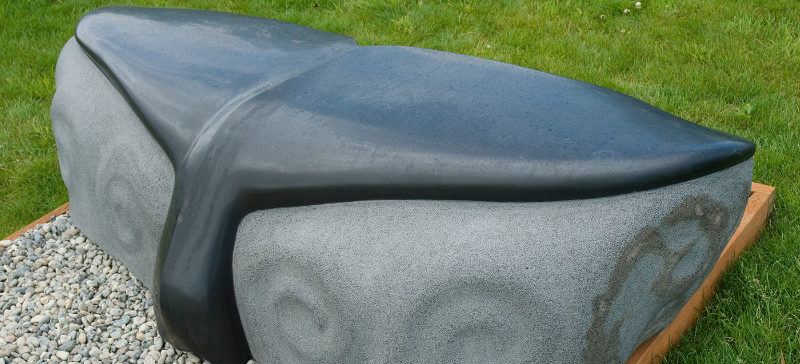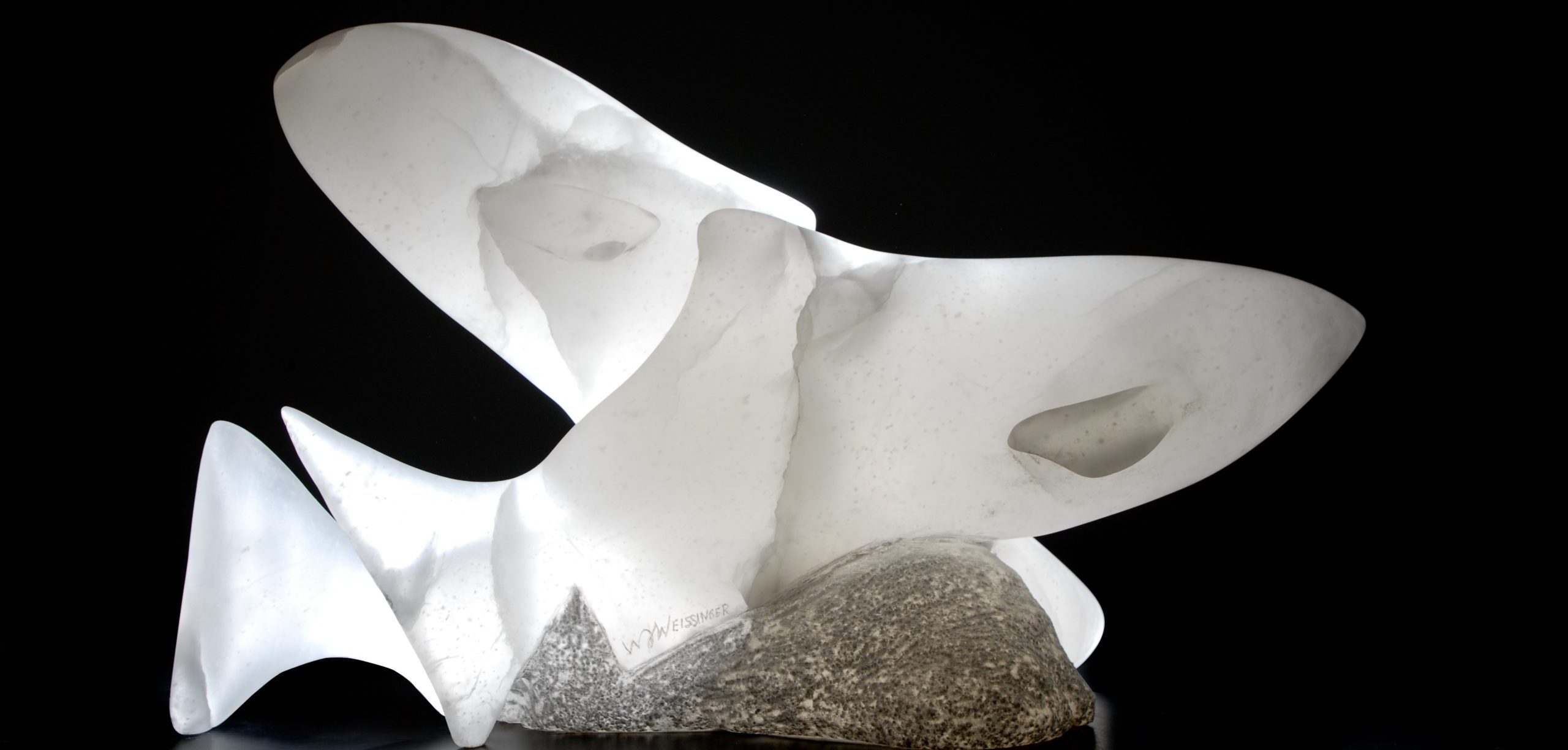

Meet Martin Beach
Q. What is your life history as it relates to being an artist?
A. Prior to my junior year at The Evergreen State College, I had throughout my entire life focused on computer science and mathematics, probably because it had something to with both my parents being computer engineers. In my junior year I switched over to a visual arts education. Upon graduating in 2010, I moved to Indiana but still continued to explore, learn and create.
Q. Why did you become an artist?
A. I needed a life change; science is great, but I finally realized that I had no passion for doing it. So I tried doing the opposite and became an artist, and haven’t looked back.
Q. What key life events affected your direction in art?
A. During my senior year at Evergreen, I was taking a program called “Studio Projects – Land and Sky,” which dealt with identity and interpretation of landscape through various media. There was a 3D project that could involve any medium of our choosing. The professor, Robert Leverich, challenged us with the possibility of using stone. It was love at first sight. It started at first with chlorite, but after a few months I was into granites and basalts.

A little less then a year after graduating, I began to work as a studio assistant for Bloomington, Indiana sculptor Dale Enochs, building a large public piece for the University of Central Florida out of limestone and steel. As a studio assistant I not only picked up valuable pragmatic skills, but also learned a mindset. As an undergraduate, the studio was a sandbox. I had a million ideas running through my head, and a need to test every one of them. Though that was an important process and learning experience, most of the earlier work was hastily made, unrefined, and non-coherent. Dale noticed that and gave me a challenge of taking one form I had made and duplicating it and to see what happens. From that exercise not only did I begin to develop my own personal design aesthetic by focusing on one thing, but also started to gain an ability to really filter the chaos of those millions of thoughts into something coherent.

Q. Who or what has influenced your art form?
A. The people that have influenced me the most have been artists Dale Enochs of Bloomington IN, Bob Leverich of Olympia WA, and Verena Schwippert of Arlington WA. Working alongside them has offered a first hand array of outlooks, insights, and processes.
Other artists and architects have been Isamu Noguchi, Antoni Gaudí, Ludwig Mies van der Rohe, Dan Kiley, Roberto Burle Marx, and Henry Moore. However, I think one of the biggest influences has been forms and energy I see when exploring landscapes, whether it be the pronounced peaks of the Olympics and Cascades, or the subtle curves of the rolling hills of southern Indiana.

Q. What is art for to you?
A. Art is the lens I use to interpret, re-interpret, integrate, investigate and evolve my perception of the world in and around me. The physical art is a by-product of experience that serves as a record to what one has learned.
Q. How has the NWSSA influenced your work as an artist?
A. NWSSA has provided an open forum via the Camp Brotherhood symposiums I have attended in which I could talk to others and really see what else was happening outside the confines of my studio, to engage in different insights, share techniques and to work with new tools. Seeing many different designs, processes, and material all in one place at one time, has really inspired me to engage and branch out into avenues I wouldn’t otherwise.
Q. Describe your art in your own terms – focusing on your stone carving.
A. My art is an exploration in techniques that allow me to imbue a material that is generally seen as something inert and inanimate with a life force through minimalist form, that embodies a very primal but refined elegance, and all the while keeping it clearly recognizable as stone. Using the stones that I find from rivers on mountain sides, to the bottom of a quarry, I begin to contrast curves with line, rounded with pointed, lights with darks, smooth with rough, etc, until the stone starts to develop its own personal identity that we as observers want to instinctually interact with.

Q. How do you develop and get your ideas and finally translate them to stone?
A. I tend to get ideas from creating a mental palette of existing design and philosophy, both human and natural, that I believe to have worked already in their original intended purpose, but to redefine them in order to fit the criteria of my own artwork. Later, should a redefinition be coherent enough to be added or translated into stone, I try to scribble it down on some paper as a reminder. From that reminder, I make refinement sketches to make it clear for myself what it is I actually want to convey. I probably would best describe them as a pictorial mission statement. When the idea becomes clear enough, I switch over to stone. At this point I am still making design decisions and refinements that inevitably make the form and look different from what I originally had on paper, but the core idea and statement still remain the same, which allow for a controlled fluidic leap from paper to stone, or the mental idea to physical artifact.

Q. Can you briefly describe a recent piece or two?
A. A recent piece “Slowly Flowing” – Morton gneiss on Indiana limestone, addresses a space beyond the confines of the limestone. The ribbon form is lifted up above the two planes via three peaks that provide a look as though there is a floating heavy mass, while the subtle pulsing curves of the horizontal provide a feel of gentle movement. Finally with the two sharp tips extending beyond the footprint of the limestone, the limestone is no longer a static frame but just the place that the gneiss happens to be gliding over in that moment in time.
Q. Do you work part or full time as an artist?
A. I work full time as an artist, but also work landscaping full time to pay for it.
Q. What stones do you prefer?
A. Granites and gneisses, but I have been recently utilizing Indiana limestone as a core component of my work for geographical reasons. The closest place for igneous stone is about 700 miles away.
Q. Do you do one piece at a time or do you have several in process at once?
A. I will very rarely have more than two projects happening at once. Things get too chaotic for my liking.
Q. What tools do you use?
A. The five most commonly used tools I use to form stone are a hammer, chisel, angle grinder, pneumatic hammer, and polisher.
Q. Where do you exhibit your work?
A. Like many other artists, most of the work is stationed around the yard and tucked away in the garage. Though there is no permanent place of exhibition, I do have a piece in a show at the Jacksson Contemporary Art Gallery in downtown Columbus, and coming up for the month of February 2014 a show at the John Waldron Center for the Arts in Bloomington Indiana. Previous shows have included a winter 2012-13 exhibition at the Columbus Learning Center in Columbus Indiana, an April 2012 show at the Waldron, and of course at the NWSSA’s Camp B Symposium this past summer.

Q. How much work do you complete in a year?
A. Last year I would say around 20 Pieces that I would be willing to admit too. However, I have been pushing to work bigger so that number may decrease for 2013.
Q. Do you teach art?
A. No, but I would be lying if I said it hadn’t crossed my mind. “Professor Martin,” now there’s something I could put on a plaque.

Q. What scale or size do you work in, and do you have a favorite scale?
A. Most of my pieces hover around a footprint (Limestone) of 25 x 20 inches. And I am really enjoying working at that size, but I am trying to go bigger, and have only just recently been able to do so. So in the coming year, I suppose I will be finding out.
Q. What have been your satisfactions in your life as an artist?
A. Waking up in the morning knowing that something will be there to challenge me, to go farther, walking out the door and to see or meet someone or something new, and of course when you achieve those meditative moments of clarity when working with a material you love.

Q. What obstacles and challenges have you faced or are still facing?
A. Like with other artists, one of the biggest challenges that I face and realize is just how non-pragmatic being an artist is. It is a lot of hard work. I suppose it’s like JFK said, “We don’t do these things because they are easy, but because they are hard.” And I just had to fall in love with stone…
Q. What are you looking forward to?
A. I am looking forward to the gallery show coming in February, and just being as productive as I can for the next 5 months when the chill of the winter slowly creeps in.
Finally, I just want to say….
Rock on!
See more of Martin’s work: http://www.lithomorph.com/











We need some kind of descriptive text here.